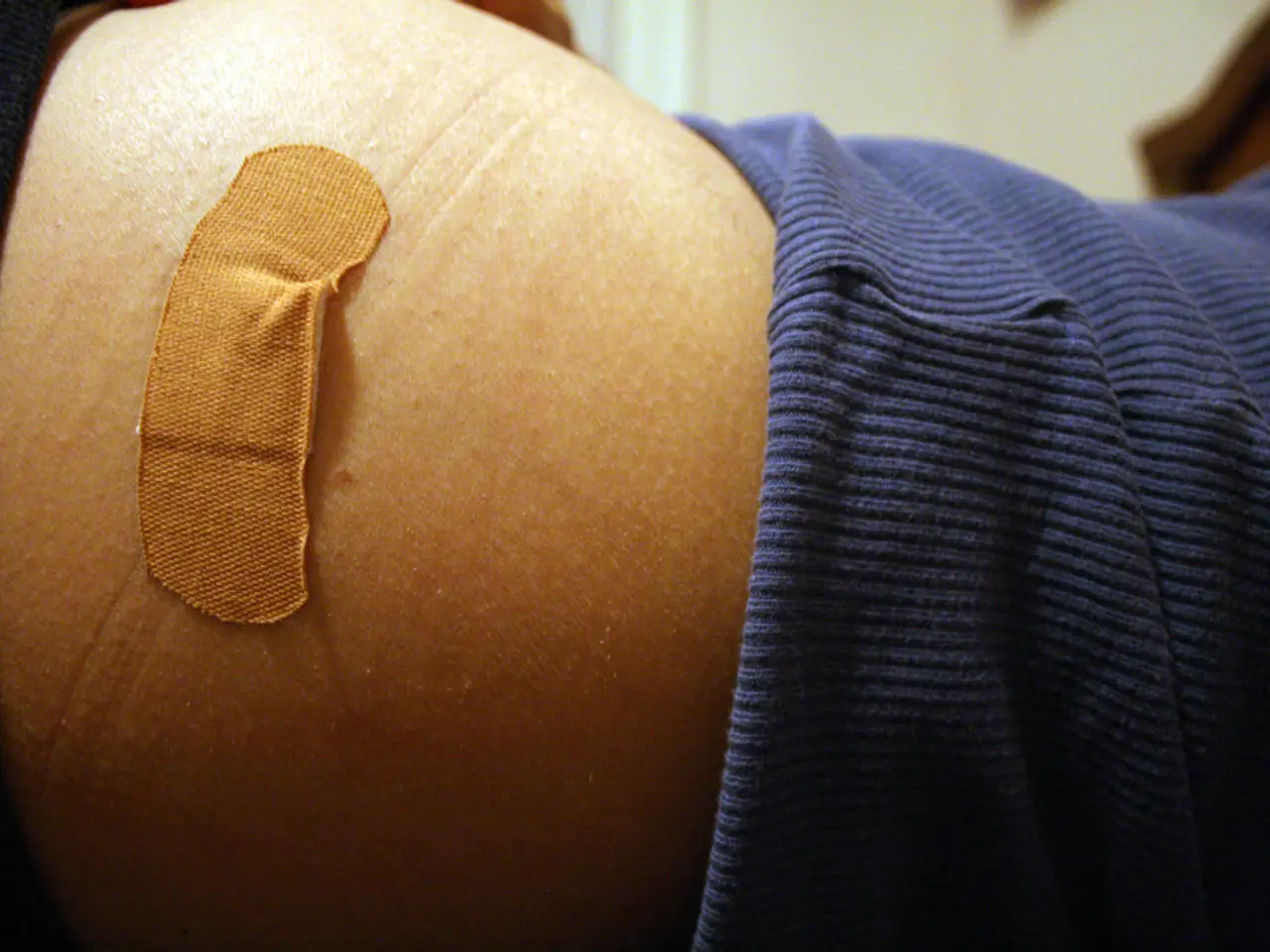Emergency assistance required for severed digit: Essential first aid guidelines
Deep cuts on a finger can be a cause for concern, potentially requiring immediate medical attention and careful aftercare. Here's what you need to know about first aid, treatment, and recovery.
First Aid Steps
In the event of a deep finger cut, it's essential to take prompt action. The following steps can help minimize the risk of infection and other complications:
- Stop bleeding: Apply firm, direct pressure using a clean cloth or sterile gauze until bleeding slows or stops. Elevate the injured finger above heart level to reduce blood flow.
- Irrigate the wound: Use clean water to flush out dirt and debris from the cut to reduce infection risk.
- Dress the wound: Apply a moistened sterile pad, ideally with antibiotic ointment if available, then cover with a dry dressing. Change dressings every 12 hours, observing for signs of infection such as swelling, oozing, foul smell, or redness, and seek medical care if infection is suspected.
- Prevent shock: Lay the person down, elevate their feet about 6 to 10 inches, keep them warm and hydrated, and prepare to turn them on their side if vomiting occurs[1].
Emergency Treatment Guidelines
If bleeding does not stop after 10 minutes of firm pressure, there is heavy bleeding, an object is embedded, or if the wound is deep enough to expose tendons, muscles, or bone, seek emergency medical care immediately[3]. A healthcare provider may perform wound cleaning with sterile techniques, assess the need for tetanus prophylaxis, and provide pain control.
Deep or complex cuts often require surgical repair, which might involve suturing skin, tendon repair, or more extensive reconstructive procedures depending on the damage[2]. Post-surgery, the patient is monitored for complications such as infection or fluid accumulation possibly requiring drains[2].
Surgical Procedures and Postoperative Care
Surgery for deep finger cuts typically involves careful debridement, layered suturing to approximate tissues, and ensuring tendon and nerve integrity. After surgery, the wound site is monitored in postoperative care for healing progress and signs of infection. Closures like stitches are usually removed 7–10 days after surgery once healing is sufficient[2].
Early gentle finger movements may be encouraged depending on the injury to reduce stiffness and improve recovery. Use of slings or splints could be recommended to immobilize and protect the finger during healing[3].
Potential Complications During Recovery
During recovery, it's crucial to watch for signs of complications such as infection, wound reopening, or poor healing. Infection can rapidly worsen and lead to serious systemic illness if untreated. Wound reopening or poor healing may require further medical intervention. Joint stiffness, chronic instability, or nerve damage can occur, particularly if the injury involved underlying structures[2][4].
Surgical drains sometimes used may clog and cause abscess formation requiring prompt care[2][4].
Aftercare Tips
To aid healing, keep the wound clean and dry except when cleansing as directed by healthcare providers. Watch for any increased pain, redness, swelling, warmth, or pus discharge and report these immediately. Attend follow-up appointments for suture removal and assessment. Protect the finger from reinjury by using protective coverings or supports as advised. Gradually resume mobility exercises if recommended to avoid joint stiffness and maintain function[3][4].
In some cases, a doctor may recommend leaving a deep cut open to heal on its own. For those with diabetes, it's essential to be aware of signs that the wound is not healing correctly, such as symptoms of infection, slow healing, numbness, nerve pain, skin discoloration, swelling, pus oozing from the wound, a bad odor, fever, and additional complications[4].
Summary
Deep finger cuts require prompt first aid with wound cleaning and bleeding control, professional evaluation for possible surgery, and diligent monitoring during recovery to mitigate risks like infection and functional impairment. In some cases, surgical procedures like skin grafts, replantation, or reconstructive surgery may be necessary. With proper care and aftercare, most deep finger cuts heal within a reasonable time, although full recovery from a finger replantation can take months or even years.
- Deep cuts on a finger might necessitate reconstructive surgeries, particularly if tendons, muscles, or bones are exposed.
- In cases of deep finger cuts, it's important to monitor for signs of mental health issues such as depression during recovery, as physical trauma can lead to emotional distress.
- Chronic diseases like diabetes can complicate the healing process of deep finger cuts, requiring careful aftercare and attention to warning signs.
- To promote workplace wellness and mitigate the risks of workplace injuries, it's crucial for workplaces to implement safety protocols and offer educational resources regarding first aid and proper use of equipment.
- The science behind predictive models can help healthcare professionals anticipate the potential outcomes of various therapies and treatments for patients dealing with chronic diseases and medical conditions, such as multiple sclerosis or Crohn's disease.
- In addition to addressing physical health concerns, it's essential to prioritize mental health during recovery from a deep finger cut, especially if the injury was due to an accident and falls.
- CBD, a popular natural remedy, may help manage pain and inflammation post-surgery, although more research is needed to fully understand its effects and potential side effects.
- Fitness and exercise play a crucial role in the overall health and wellness of individuals, as they can help strengthen the body's natural defenses against diseases and promote mental health.
- Skin care is crucial during the recovery process following a deep finger cut, as proper care can help prevent infection and aid in the healing process.
- In cases where a deep finger cut does not heal properly, therapies and treatments like hyperbaric oxygen therapy or skin grafts may be necessary to facilitate recovery.
- Monitoring and managing multiple medical conditions, such as asthma, diabetes, or chronic diseases, becomes increasingly important when dealing with complex injuries like deep finger cuts, as these conditions can impact the recovery process and increase the risk of complications.




